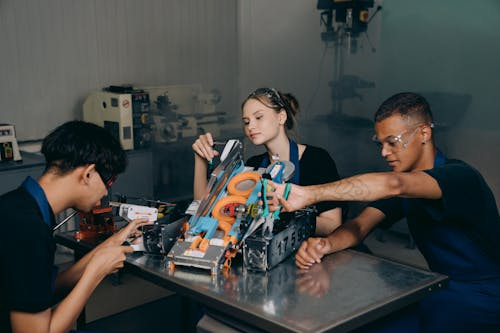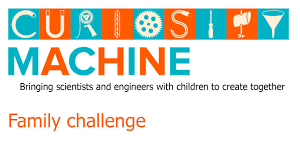Top Resources to Learn AI & ML in 2025 for High School Students
- BetterMind Labs

- Sep 2
- 5 min read
Updated: Oct 29
Introduction: Why Parents Should Care About AI & ML

Picture this: your teenager isn’t just scrolling on TikTok — they’re using machine learning to build a bot that predicts viral trends. Or they’re coding a model that helps track air quality in your neighborhood. This isn’t futuristic anymore; it’s happening right now with high school students across the U.S.
For parents, AI and machine learning (ML) can sound intimidating — full of math, jargon, and endless coding. But here’s the good news: today’s blog we share resources for students to learn AI step by step, even without prior experience. And when done right, it’s not just about coding — it’s about teaching your child problem-solving, creativity, and critical thinking.
In this guide, I’ll walk you through the best AI/ML resources in 2025 specifically designed for high school students. I’ll also share insider tips, examples of what other teens have built, and how mentorship-based programs like BetterMind Labs are helping students go from “curious” to “capable.”
Online Learning Platforms: Great Beginner Friendly Resources to learn AI
Google AI for Everyone
Google AI for Everyone is the perfect gentle start. No coding, no math-heavy lessons — just clear explanations of what AI is, how it works, and where it shows up in everyday life.
Length: 4 weeks, 2–3 hours per week.
Good for: Teens who want to understand why AI matters before diving into code.
Google Machine Learning Crash Course
For the more hands-on learner, Google’s ML Crash Course is excellent. It has video lectures, coding labs, and over 100 practice exercises. Students learn regression, classification, and even how neural networks mimic the human brain.
💡 Example: One student I worked with used this course to create a mini project predicting how much sleep affected his basketball performance. It gave him not only a science fair project but also a personal connection to AI.
AI Python for Beginners (DeepLearning.AI)

Hosted on Coursera, this four-part course is designed so students start building projects on day one — even if they’ve never coded before. An AI chatbot guides them with instant feedback, which feels a lot like having a tutor at their side.
University-Backed Courses That Feel Accessible
Elements of AI (University of Helsinki)

With over 1.7 million students worldwide, Elements of AI is one of the most popular introductions. The best part? It’s completely free.
Part 1: What AI is, ethics, misconceptions.
Part 2: Basic algorithms and beginner-friendly coding in Python.
This course is a great way for teens to learn how AI connects to society, not just technology.
Specialized High School Programs
These programs are designed specifically for high school students, blending structured learning with real-world applications.
Princeton AI4ALL

A selective three-week summer program focused on AI for social good and ethics. Housing is included, but it’s limited to students from underrepresented backgrounds. Perfect for rising 10th graders.
Curiosity Machine AI Challenge

A free program where students solve community challenges using AI. Projects have ranged from recycling solutions to safe biking route prediction.
Mentorship-Based Learning: A More Personalized Path
While big platforms are great, some students struggle to stay consistent without personalized guidance. That’s where programs like BetterMind Labs stand out.
BetterMind Labs is designed for high school students only and combines three elements parents value most:
Instructor-led sessions → students learn the foundations of AI/ML theory.
Mentorship with professionals → one-on-one and small-group support from graduates and industry experts.
Impact-driven projects → instead of generic exercises, students build real-world solutions.
💡 Example: A group of students from Uzbekistan built a wildfire detection system using image recognition. Another student combined biology and AI to predict plant diseases — projects like these became the highlight of their college applications.
Parents often tell me that this blend of structure + mentorship + portfolio projects is what sets BetterMind Labs apart from self-paced platforms. If your teen learns best with guidance and accountability, this program is worth exploring alongside traditional online courses.
Interactive Platforms for Creative Learners
MIT App Inventor

With MIT App Inventor, students drag and drop code blocks to build apps. It’s perfect for visual learners and those intimidated by coding syntax.
Over 900,000 monthly active users worldwide.
Students can make apps that recognize images or even translate spoken words.
Scratch Programming
Scratch (ages 8–16) is like Lego for coding. Students snap together blocks to create animations, games, and even beginner AI models. It teaches logic without the overwhelm of text-based coding.
Replit

Replit is an online coding environment — think Google Docs but for code. Students can write Python, share projects, and test ML models instantly.
Video-Based Learning for Visual Students
Sometimes, the right video makes concepts click.
3Blue1Brown: Visual animations of neural networks.
StatQuest: Friendly breakdowns of ML algorithms.
Microsoft ML for Beginners: A full 26-lesson YouTube series.
Building a Skill Pathway (Step by Step)
AI isn’t one skill — it’s a pathway. Here’s how parents can think about it:
Phase | Resources | Why It Matters |
Foundation (Math + Python) | Khan Academy, Codecademy, W3Schools | Builds algebra, statistics, and coding basics. |
Data Science | NumPy, Pandas, Matplotlib | Teaches handling and analyzing data. |
Machine Learning | Helps students progress from data analysis to model building. | |
Mentorship | Adds real-world projects and mentor guidance for stronger outcomes. |
Competitions & Community Engagement
Kaggle: Students compete by solving beginner-friendly AI problems.
AI4ALL & Technovation: Youth-focused AI challenges with mentorship.
Reddit r/MachineLearning: A global community where students can ask questions and get advice.
These opportunities let students apply what they’ve learned, often turning coursework into portfolio projects.
Advanced Opportunities
Once students are confident with the basics, they can step up to more advanced challenges:
edX Microsoft Principles of Machine Learning – structured, university-level content.
Harvard’s Data Science: Building Machine Learning Models – more theory-heavy, but very rewarding.
Fast.ai – project-first approach to advanced deep learning.
Why These Programs Work for High Schoolers
Accessible starting points (Scratch, MIT App Inventor).
Progressive learning (Google courses, Elements of AI).
Project-based outcomes (Veritas AI, BetterMind Labs).
Mentorship to stay motivated.
Portfolio-ready results that impress college admissions.
Conclusion: Helping Your Teen Take the First Step

As a mentor, I tell parents this all the time: It’s not about turning your child into an AI expert by junior year. It’s about helping them explore, build confidence, and create something they’re proud of.
If your student is brand new → start with Bettermind Labs or MIT App Inventor.
If they’re ready for more → move into BetterMind Labs Advanced Program
The earlier students explore AI, the better prepared they’ll be — not just for college, but for a world where AI touches nearly every career.
👉 My advice: encourage your teen to pick one beginner-friendly resource this month. That small step could be the start of something transformative.













Comments